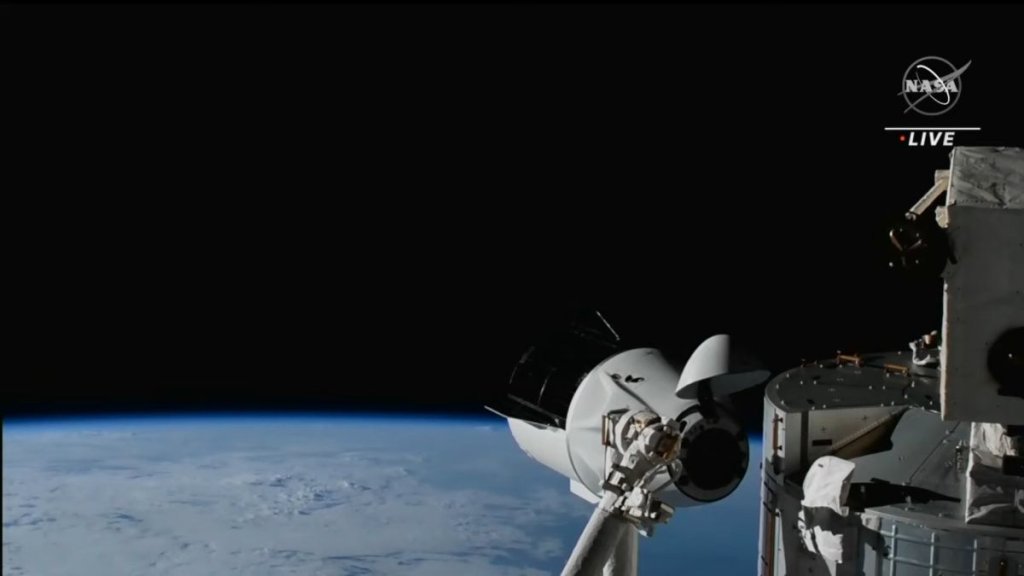
Astronauts relocate SpaceX Dragon capsule on space station (Image Credit: Space.com)
Astronauts safely flew the SpaceX Dragon capsule Endeavour to a new port on the International Space Station (ISS) on Saturday morning (May 6).
Endeavour, which carried the four astronauts of SpaceX’s Crew-6 mission to the ISS in early March, undocked from the Harmony module’s space-facing port at 7:10 a.m. (1110 GMT) on Saturday and redocked to the module’s forward-facing port at 8:01 a.m. EDT (1201 GMT).
Both the International Space Station account and SpaceX confirmed the successful docking (opens in new tab) on Twitter. “The @SpaceX Crew Dragon Endeavour redocked to its new port and completed its relocation maneuver at 8:01am ET today,” the space station’s official Twitter account wrote (opens in new tab).
Related: International Space Station — Everything you need to know
The @SpaceX Crew Dragon Endeavour redocked to its new port and completed its relocation maneuver at 8:01am ET today. https://t.co/Prt6YQWXp3May 6, 2023
All four Crew-6 astronauts — NASA’s Stephen Bowen and Woody Hoburg, the United Arab Emirates’ Sultan Al Neyadi and Russian cosmonaut Andrey Fedyaev — were aboard Endeavour during Saturday’s move.
Bowen and Hoburg served as commander and pilot, respectively. Al Neyadi and Fedyaev played supporting roles during the relocation, which made room for another Dragon at the ISS.
“Endeavour’s relocation will open up Harmony’s top port for the upcoming SpaceX CRS-28 cargo mission,” NASA officials wrote in an update (opens in new tab) on Friday (May 5), referring to a robotic resupply flight scheduled to launch in early June.
“This enables the Canadarm2 robotic arm to reach out and access the cargo inside the SpaceX Dragon resupply ship’s trunk,” they added.
That cargo includes a set of ISS roll-out solar arrays, known as iROSAs, which are designed to augment the orbiting lab’s power supply.
Spacewalking astronauts have installed four of six planned iROSAs on the exterior of the ISS to date. When all six are up and running, ISS astronauts will have 20% to 30% more juice to work with with than they did before, NASA officials have said.
Mike Wall is the author of “Out There (opens in new tab)” (Grand Central Publishing, 2018; illustrated by Karl Tate), a book about the search for alien life. Follow him on Twitter @michaeldwall (opens in new tab). Follow us @Spacedotcom (opens in new tab), or on Facebook (opens in new tab) and Instagram (opens in new tab).





